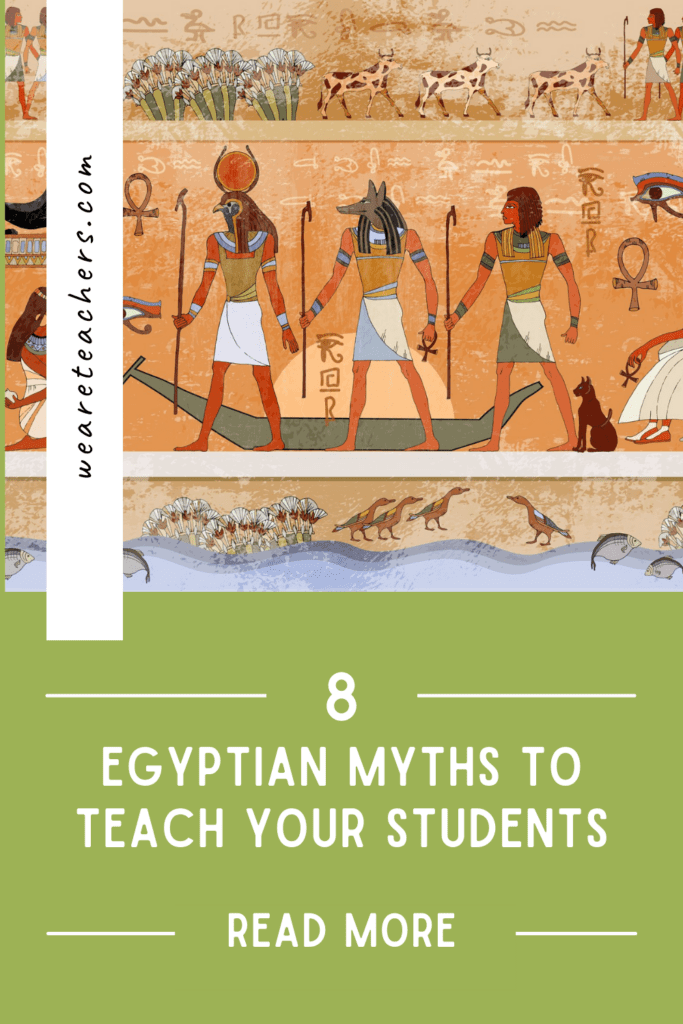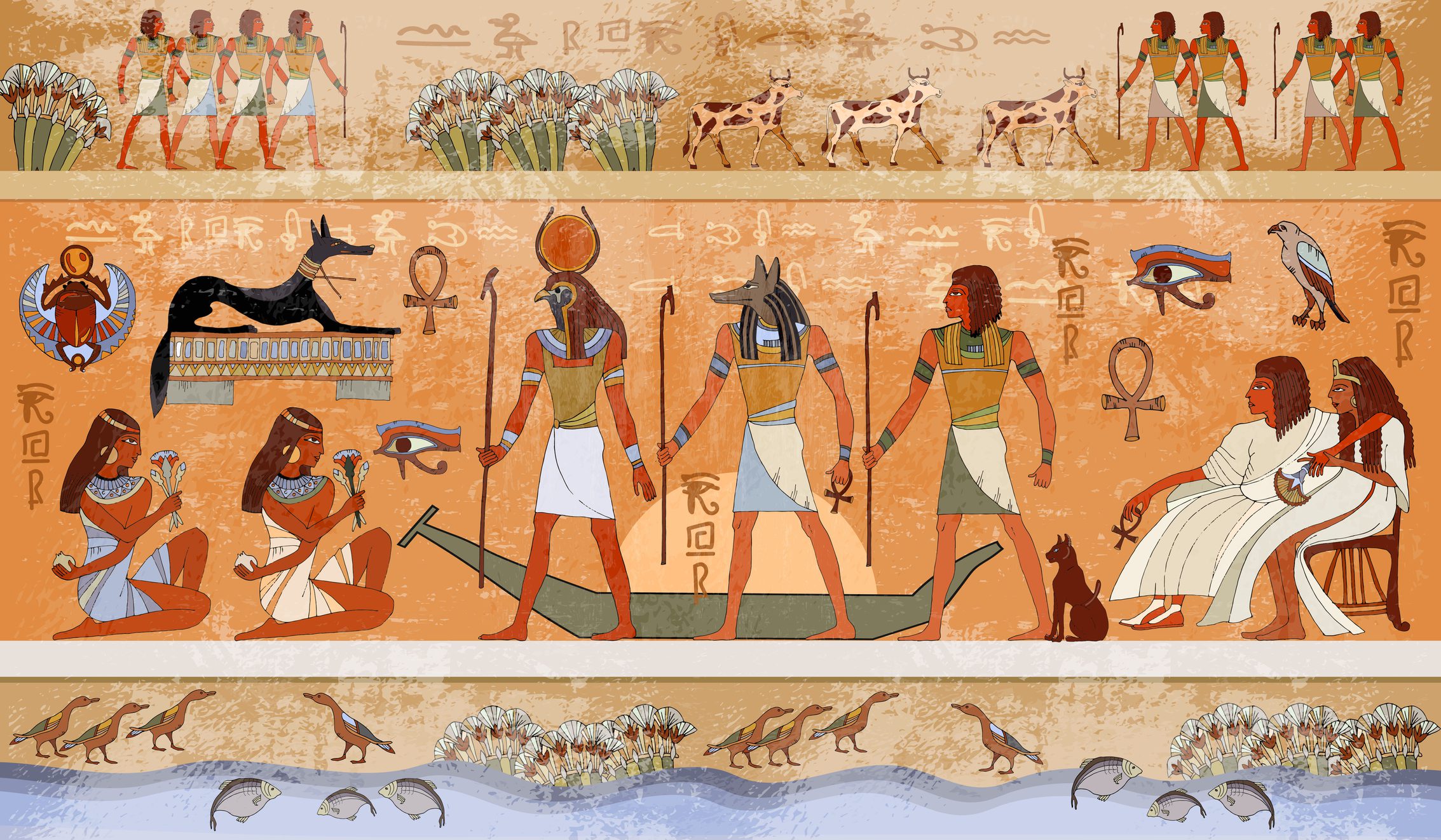When it comes to mythology, we often spend the bulk of our time reading and teaching about the Greek pantheon. But if we stop there, we miss out on amazing opportunities to share the rich and storied mythology of cultures from around the world. The gods and goddesses in ancient Egyptian myths, for example, are just as fierce, fascinating, and fun to share with students.
(WeAreTeachers note: Because these myths were shared via oral tradition for hundreds, if not thousands, of years prior to being written down, many variations of the same story exist. We have shared one popular version of each of the myths below, but you may have heard it with slight variations. Please feel free to share whichever version best suits your purpose.)
1. The Egyptian Creation Myth
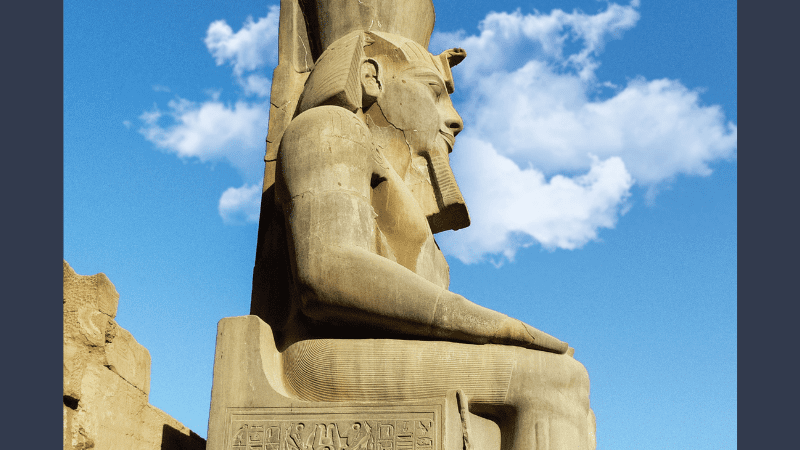
Summary:
Before there was anything, there was Nun. Nothingness. Water in every direction as far as the eye could see. From Nun, a single thought emerged and became the god Ra. Ra began speaking and everything he said came into being. He spoke and his two children were born. One night, while Ra slept, his children wandered into the darkness and became lost. Ra was devastated when he woke, so he plucked out his own eye (he only had one) and sent it searching for his lost children. As he waited for their return, he created a new eye to replace the one he had sent out to search. Ra’s original eye eventually found Shu and Tefnut and returned them to Ra, who was so overjoyed he wept and wept. His tears became the first human beings.
Classroom applications for this Egyptian myth:
- English/Language Arts: The study of creation myths from around the world can be an incredibly engaging and meaningful activity. Gather a variety of cultures’ creation myths and create a jigsaw activity where each student reads one and then shares key points about it with a small group. Ask students to focus on the differences and similarities. Be prepared for some very deep conversation about how much similarity exists between very different cultures.
- History: I love the idea of starting a unit on a specific culture or part of the world with a look at their earliest creation myths. You can ask students to make educated guesses about what the culture cared about and valued, what animals and industries were common in their region, and more.
2. The Death(s) of Osiris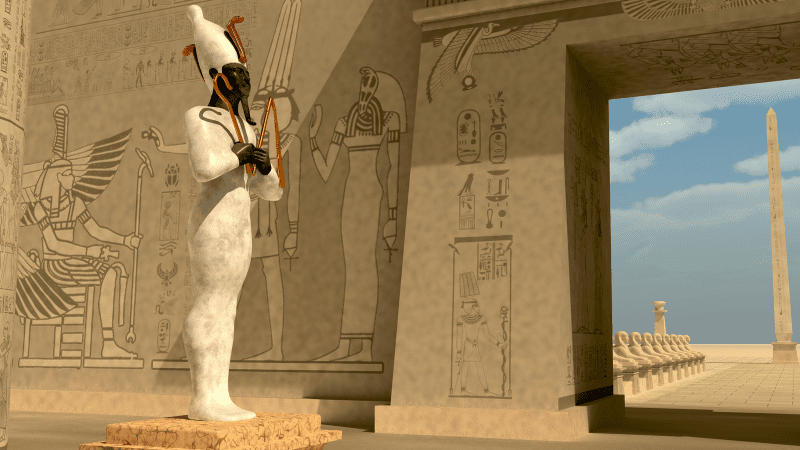
Summary:
The god Osiris rules over Egypt and is well-loved by all. His brother, the god Set, is jealous of Osiris’s good fortune. He traps Osiris in a box and throws him into the Nile. By the time Isis, Osiris’s wife, finds the box, Osiris has died. She brings his body back to Egypt for burial, but Set cuts his brother’s corpse into 14 pieces and scatters them throughout Egypt. Isis is so devastated she weeps for weeks. This causes the flooding of the Nile. She searches the land and eventually finds all but one of the pieces.
With the help of the funeral god, Anubis, Isis brings her husband back to life. Unfortunately, because he is not whole, Osiris can only remain in the land of the living for one night. The next morning, Isis wakes up alone. Osiris has taken his place as the god of the Underworld. Set takes the throne of Egypt. He doesn’t know, however, that Isis is now pregnant with Osiris’s child, Horus, who will eventually avenge his father.
Classroom applications for this Egyptian myth:
- Science: For many cultures, myth was not only religion, it was science too. The Nile River valley flooded annually in Egypt for centuries (until dams were built beginning in 1902 and ending with the Aswan High Dam in 1970). This natural phenomenon provided fertile soil for the farmers living alongside the river for thousands of years. They gave thanks to Isis for the flood because of this. People continue to debate the benefits of the dams versus their negative effects. Supporters cite reduced flood damage, hydroelectric power generation, and the like. Those who think the dams should be removed point to soil erosion and the need to use powerful chemical fertilizers in farming because the soil is no longer being refreshed by the flood process. This myth would work as a fascinating window into debates over scientific “improvements” on nature.
- History: When studying male primogeniture throughout history, one can see numerous times when families turned to violence in an attempt to seize power. Looking at how early cultures represented this in their myths is a fascinating window into human behavior.
- Social-Emotional Learning: Like so many other cultures’ myths, Egyptian myth is no stranger to family drama. I love the idea of looking at some of the more outrageous stories of gods and goddesses behaving badly and asking students to rewrite them with more socially and emotionally healthy behaviors. How might this story have turned out differently if Set had used his words to express his jealousy to Osiris? How could their parents have helped?
3. Isis and the Seven Scorpions
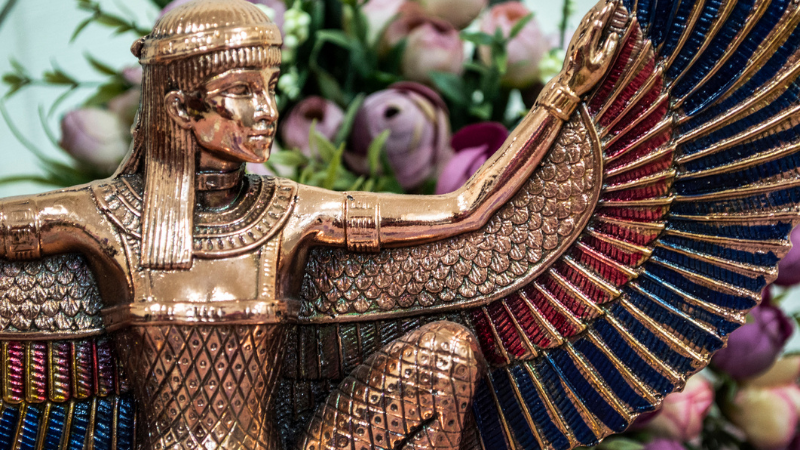
Summary:
Isis hides her pregnancy and the birth of Horus from Set. She plans to raise Horus to be strong and good and to prepare him to overthrow his uncle. Serket, the goddess of venomous creatures, arranges to have seven of her most powerful warriors, disguised as scorpions, stay with Isis and Horus as their bodyguards. Pretending to be mortal, Isis roams from village to village, relying on the charity of the people she encounters.
In one village, a wealthy woman slams her door in Isis’s face, refusing to give her and her baby food or shelter. In retaliation, the scorpion bodyguards give all their venom to the strongest among them. That night, the scorpion stings the son of the wealthy woman. When Isis realizes what has happened, she recites a powerful incantation to nullify the poison and bring the boy back to life. When the wealthy woman realizes who Isis really is, she apologizes and offers her all of her riches.
Classroom applications for this Egyptian myth:
- English/Language Arts: Disguises are a huge part of so many of the most famous stories throughout history. Challenge your students to find another myth from a different culture that involves gods disguising themselves as mortals. Work with them to discover the commonly shared elements of these stories and what they reveal about the humans who told them.
- Science: This myth was used by the ancient Egyptians as an explanation for how they learned to treat scorpion stings. It also explained the presence of the Deathstalker scorpion, whose sting can kill human beings. Humans have often come up with unusual remedies for illnesses and poisons. See if other cures for stings, bites, and other afflictions have unusual myths behind them. This would be a fascinating launch when discussing herbal remedies or medical treatments from the past.
4. Battle for the Throne
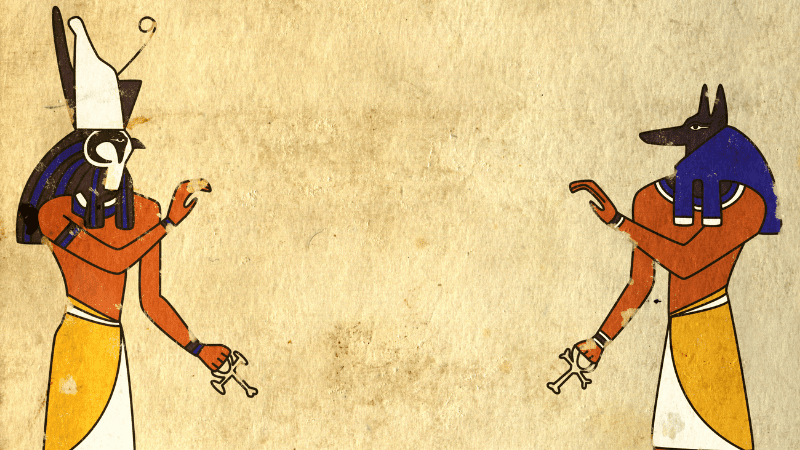
Summary:
When Horus comes of age, he appears before the council of the gods and asks them to remove Set from power and grant him the throne. The gods and goddesses are unsure of what to do. While Set’s actions were terrible, he has kept Egypt safe from its enemies. They fear that without Set as pharaoh, Egypt could fall into chaos. For over 80 years, Set and Horus battle viciously for the throne with neither emerging as the obvious victor.
In one fight, Set plucks out Horus’s eyes. (The goddess Hathor gives them back to him.) Horus nearly drowns Set in a boat race, but Set transforms into a hippopotamus and sinks Horus’s boat. Eventually, Ra himself sends word to the Underworld asking for Osiris’s opinion. Not surprisingly, Osiris says his son should rule Egypt. With that, the council rules for Horus, and Set gives up the throne. Horus takes his place as the ruler god of Egypt.
Classroom applications for this Egyptian myth:
- History: Comparing the actions/behaviors of the gods to the actions/behaviors of men and women fighting for power throughout history could be a fascinating activity. Since cultures often made sense of their own behaviors by creating similar stories for their gods and goddesses, we can get an interesting peek into how power and leadership worked in ancient societies (as well as not so ancient ones!).
- English/Language Arts: While we often talk about myth as the religious stories, historical documents, or even the scientific explanations of ancient cultures, it’s important to remember that they were also often used as entertainment. A closer look at the battles of Horus and Set reveals events that would rival some of our action/adventure, comedy, and even horror films today. Asking students to identify the entertainment aspects of these stories is a great lesson in writer’s purpose. It could also be a fun narrative-writing exercise to ask students to modernize these myths. Can they find any common threads between the gods’ battle for power and the political machinations of today?
5. The God of Mummies
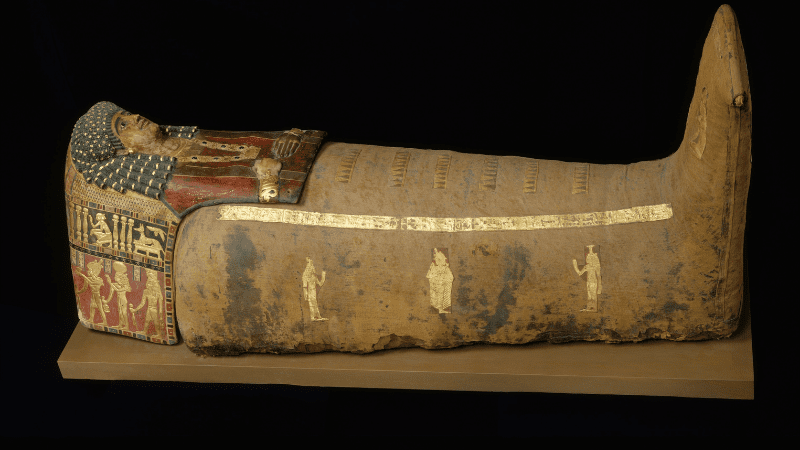
Summary:
Anubis is the son of Set and the goddess Nephthys. His mother doted on him and loved him dearly, but his father was cold and never seemed to care for him much. (In some versions of this myth, Set suspects that Anubis is not really his son but Osiris’s or, in some versions, Ra’s son). Because of this, he learns to stay out of sight. He becomes stealthy, like the jackals that he loves to watch. He watches them hunt and kill, but also watches them scavenge the bodies of the dead. It gives him lots of time to consider the nature of life and death and how the two are intertwined. Eventually, he decides to become the ruler of the Underworld. Neither of his parents are surprised.
Anubis enjoys his position in the Underworld and would have gladly done it for eternity, but when his father kills his beloved uncle, Anubis journeys back to earth to help his aunt, Isis, prepare Osiris’s body. In doing so, he creates the first mummy, setting the standard for how humans should treat the bodies of their loved ones after death. When Osiris returns to the Underworld, Anubis happily steps aside, allowing Osiris to take the throne. From that day onward, Osiris rules the Underworld, and Anubis becomes the god of funeral rites and mummification. He is happy to be able to work so closely with his uncle (father?).
Classroom applications for this Egyptian myth:
- Science: Mummification is a fascinating topic. Any study of how the ancient Egyptians preserved their loved ones after death should begin with some background knowledge of how they believed this important rite came to be. This can also be part of a discussion of the great pyramids of Egypt, so often built as tombs for pharaohs.
- English/Language Arts: Anubis is a great character to study when talking about antiheroes. He does not meet many of the standard requirements of a hero. His cousin Horus seems a much better fit for that distinction, yet he does have many heroic qualities. He does the right thing when the time comes and treats people fairly. He cares deeply for his family.
- History: How cultures treat their dead is a fascinating subject of study for older students to explore.
6. The Goddess of the Waters
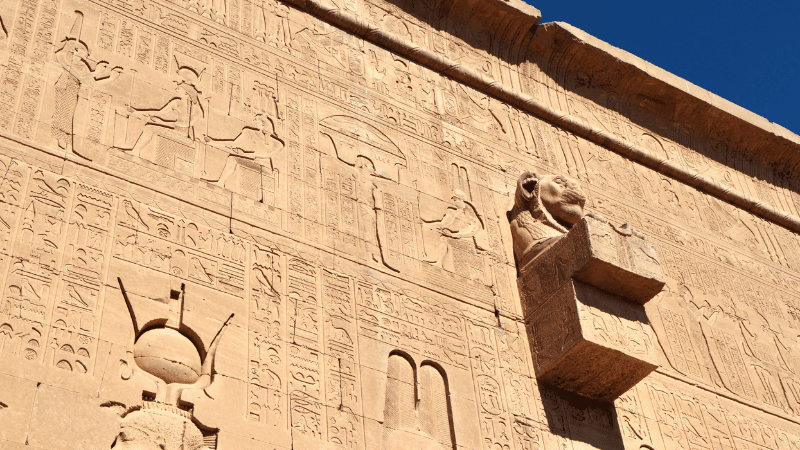
Summary:
Tefnut, Ra’s only daughter and one of the first goddesses ever created, was annoyed. Ra spends all of his time worrying about his great-grandchildren, who were constantly causing trouble with their petty squabbles. Adding insult to injury, Isis was by far the most beloved goddess in Egypt. Even though Tefnut is the goddess who brings them the rain and the waters of the Nile, they praise Isis for flooding it each year. Having had enough, Tefnut decides to run away. Ra ignores his pouty daughter, but Thoth, god of wisdom and the tongue of Ra, isn’t so sure.
As Egypt becomes drier and drier, Thoth realizes it’s getting increasingly difficult to speak Ra’s words into being. He pleads to Ra to send for Tefnut and bring her home. Eventually, Ra relents, sending both Thoth and Tefnut’s brother-husband Shu to convince Tefnut it’s time to come home. When they finally find her, Tefnut does not want to return. It is only after Thoth proclaims her “the most honorable” of the gods that Tefnut relents. From that day onward, the Egyptians (and the gods) recognized that the goddess of the waters was indeed “most honorable” in such a dry land.
Classroom applications for this Egyptian myth:
- English/Language Arts: This myth is perfect for a mini-lesson on theme. There are multiple thematic statements that could emerge from this short myth, dealing with ideas like arrogance, appreciation, flattery, and more.
- Science: Once again, this myth gives us a glimpse into how ancient cultures used their myths as science. This story could introduce a unit on the geography of Egypt or deserts in general. It could also be compared to other cultures’ myths that explain natural phenomena, like the ancient Greek myth of Persephone.
7. The Goddess of Happiness Gets Angry
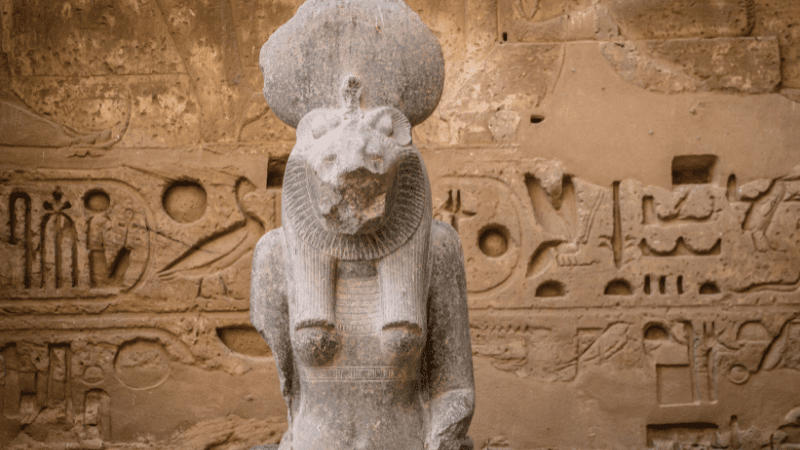
Summary:
Hathor, the eye of Ra, is beloved by humans and gods alike. She loves to dance among the mortals and bring them pleasure and joy. She gives people beer to lift their spirits and releases them from worry or care. When Ra comes to her and demands she be the one to take vengeance on the humans for disrespecting him, Hathor doesn’t know if she can do it. She loves mortals! But once she starts listening to their ugly taunts, she finds herself flying into a rage. So Hathor transforms herself into a mighty lioness and kills every mortal she encounters. She kills so many that they begin to call her Sekhmet, the goddess of war. Ra is impressed but also fearful. If Sekhmet keeps this up, there will be no one left to worship him!
He enlists the other gods to help him control Sekhmet. While she sleeps, the gods brew the most potent beer that has ever been made. They make oceans of it. Ra has them dye it red so it looks like blood and they spread it all around Sekhmet while she sleeps. When she wakes up, she begins to drink, believing it to be the blood of all the mortals she killed the day before. As she drinks, her rage slips away and Sekhmet goes to sleep. Hathor, the peaceful goddess of love, has returned. Sekhmet still exists, however, and makes a ferocious appearance from time to time.
Classroom applications for this Egyptian myth:
- English/Language Arts: Obviously a myth for older students, this tale deals with the powerful thematic concept of duality. There are some great extended thinking questions to be asked with this myth that could also work for a fascinating Socratic seminar. Imagine listening to your students discuss why the ancient Egyptians imagined a goddess as the bloodthirsty deity in charge of war instead of a god. Or how the goddess of love could transform into the bringer of vengeance.
- History: Sekhmet is also known as the goddess of plagues (and a healer as well!). Looking over historical documents describing plagues, it might be interesting to ask students to consider why the ancient Egyptians felt the need to personify the onslaught of a plague. What purpose does believing a god/goddess could bring a plague, or save you from one, serve mankind?
8. Rhodopis, the Egyptian Cinderella
Summary:
Rhodopis was a Greek girl who had been kidnapped by pirates and sold into slavery. Although she is teased by the other slaves for her light hair and pale skin, she kindhearted. She is also a beautiful dancer. The Egyptian who purchased Rhodopis buys her a pair of rose-red slippers to wear when she dances. One day, the Pharaoh announces he will hold a large festival for all to attend. The other slaves give Rhodopis extra work so that she is unable to attend. While washing clothes in the river, she takes off her slippers. Just then, an enormous falcon swoops down, snatches one of the slippers, and flies away. Rhodopis knows that this falcon is the god Horus and that he must have some need for her slipper, so she simply tucks its mate into her robes and continues her work.
Horus takes the slipper to the Pharaoh and drops it into his lap. The Pharaoh, aware that Horus is sending him a message, informs everyone that he will marry the woman who fits into the slipper. He travels up and down the Nile, searching for the owner of the slipper. Rhodopis is frightened by the barge and the Pharaoh’s soldiers and hides in the rushes as the other slaves try on the slipper. The barge is just about to leave when the Pharaoh spies Rhodopis in her hiding spot. She tries on the slipper, which fits perfectly, and then removes its mate from her robes, proving that they are hers. The Pharaoh tells everyone within earshot that she will be his queen.
(WeAreTeachers note: The oldest known version of this story is not nearly as close to the Cinderella story we know today as this version. There are some non-school appropriate elements to it, and many dispute if it even was a story told in ancient Egypt. This, however, is one of the joys — and frustrations — of myth. As stories are passed along, they are changed, added to, and made to fit more with the culture of the person telling the story.)
Classroom applications for this Egyptian myth:
- Elementary/English/Language Arts: Many versions of the Cinderella myth exist in cultures all over the world. A compare/contrast activity is one that can be done with students of varying ages since the level of complexity can be changed to suit the students. Elementary students may just look for shared events and characters like the kindhearted main character or the special shoes. Older students can examine what they can learn by examining the shared theme of these stories. What happens when young girls grow up reading a story that seems to tell them that if they accept mistreatment and cruelty and remain kind and sweet, they will eventually be rewarded with a husband who will “save them”?
- History: The concept of how ideas spread from one culture to another is a fascinating and complex one. Tracing Cinderella myths, when they emerged in each culture, and if that emergence can be traced back to a trade route or immigration of some sort would be an incredible way to illustrate this idea for your students.
Which Egyptian myth will you be sharing with your students? Let us know in the comments.
Plus, for more articles like this, be sure to subscribe to our newsletters.
